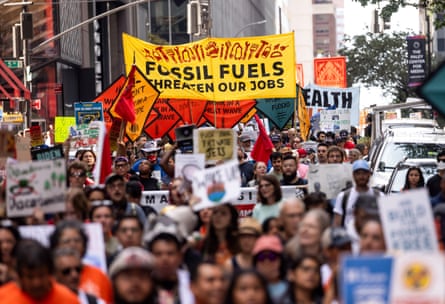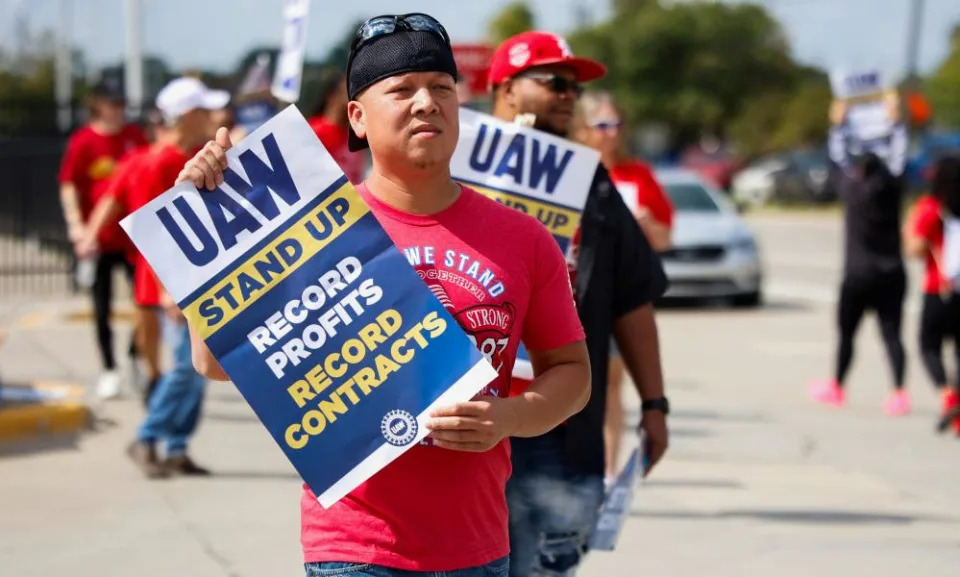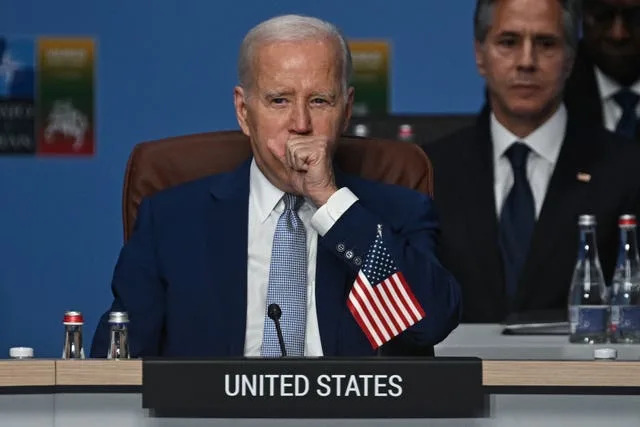Epigenetics and evolution: ‘the significant biological puzzle’ of sexual orientation
The ‘gay gene’ some touted as explaining widespread homosexuality in humans has not been found. Might epigenetics hold the answer?
Benjamin Oldroyd
THE GUARDIAN AUSTRALIA

Sun 17 Sep 2023
Last century, when things were a whole lot worse for gay people than they are today, there was a widely held notion that human homosexual behaviour was a choice, and that a homosexual person could change their ways and become heterosexual. For this reason, the occasional report of a “gay” gene was welcomed by many progressive people. The existence of such genes would show that homosexuality was not a choice but an inevitable consequence of development and genetics. Indeed, gay genes were perhaps the only example where many left-leaning people heartily embraced genetic determinism.
Awkwardly, like cold fusion, reports of genes that “cause” human homosexuality (and many other human behaviours) have failed to stand up to scrutiny – there is no “gay gene” in the sense that no one has identified genetic markers or genes that reliably predict sexual orientation in humans. Moreover, since homosexuality would generally be reckoned to reduce reproductive output of an individual, an allele (a gene variant) that directly causes homosexuality is unlikely to spread in a population.
Epigenetic inheritance remains a tantalising possibility
Nonetheless, human homosexuality in both sexes is widespread, as it is across the animal kingdom. One study estimated that 3.2% of the Australian human population identifies as gay or lesbian, a frequency that is typical across the world. Despite the lack of genetic markers that are predictive of human homosexuality, the trait is highly heritable in the sense that siblings are more similar in their sexual orientation than expected by chance. However, the level of concordance between identical twins is surprisingly low.
Here’s an anecdotal example. I once had a friend who was the president of Gay Liberation in Victoria as a young man during the 1970s. “Fred”, now deceased, had a prominent scar on his forehead, a legacy of being beaten up in a country town where he had been invited to speak about his cause. (The burghers of the town were waiting to pick him up at the station, with evil intent.) Yet Fred’s identical twin was not gay. So much for genetic determinism. If homosexuality was solely genetically determined, identical twins should have identical sexual orientation.
The widespread occurrence of homosexuality in humans and other animals, together with its high heritability but unpredictable genetics and lack of genetic markers, is a significant biological puzzle. There are three leading hypotheses for the common existence of homosexuality in human populations, one based on kin selection, one on sexually antagonistic alleles, and one on epigenetic inheritance.
Briefly, the kin selection idea is that a gene that promotes homosexual behaviour can spread in a population if homosexual people contribute significantly to the reproduction of close relatives. Although this idea is plausible, the lack of any genetic marker that is reliably associated with sexual orientation is a strong argument against it.

Epigenetics, the misunderstood science that could shed new light on ageing
The “antagonistic alleles” idea is that there are certain genes that are selected in different directions, that is, positively selected in males, but negatively selected in females and vice versa. Hypothetically, because no such gene has been identified, a gene that promotes testosterone production could be at a selective advantage in males if it promoted traits such as muscle development, risk taking, opposite-sex sexual attraction and increased sexual attractiveness to females. But if the same gene were expressed in the same way in females it might be disadvantageous for reciprocal reasons. This means that selection could pull in different directions in males and females, maintaining different gene variants in a population. By that I mean, gene variants that have different selective advantages in males and females can potentially coexist in a population because neither is unambiguously better. If so, sexual orientation may be more fluid than one might expect based on biological sex alone. (Well, “der”, I suspect you are now thinking, but please don’t shoot your even-handed messenger.)
Finally, we have an epigenetic hypothesis. Epigenetics is the transfer of genetic information between generations, which is not coded in DNA. In most mammals, male sexual development is determined by SrY, a gene on the Y chromosome. SrY codes a protein that interacts with other genes to reverse the default development of an embryo’s gonads from an oestrogen-producing ovary into a testosterone-producing testis. Thus, the short story of mammalian sexual development is that if a foetus is bathed in oestrogen produced by its default ovaries, it develops a female body. But if it is bathed in testosterone from its newly converted testes, it develops as a male.
Well, that’s a nice cut-and-dried story of genetic determinism, isn’t it?
I cheerfully taught it in my first-year biology classes for more than two decades, in full knowledge that the story is more complex. For example, if an individual’s testosterone production is defective, a genetic male (based on their possession of a Y chromosome and SrY gene) will develop as a female. Indeed, such individuals may be hyper-female, since they do not produce or respond to testosterone, whereas genetic females do both.
Even more extraordinary is a rare syndrome caused by a deficiency of the enzyme 5α-reductase. This enzyme converts testosterone to a more potent male-determining hormone. These kids, who are chromosomally male, are born with female-like genitalia and are often raised as girls. They then change to the male phenotype at puberty with its associated release of testosterone. Not only do male foetuses produce more androgens than female foetuses, they respond to it more strongly due to sex-specific epigenetic marks in genes that code for androgen receptors. Conversely, female foetuses produce less androgen and have reduced responsiveness to it. It is even possible for a genetically female foetus to have levels of circulating androgens in the male range but still develop as a female. So, while the primary cause of male bodies from female bodies is indeed SrY, other genes on the sex chromosomes can modify its effects.
Awkwardly, like cold fusion, reports of genes that “cause” human homosexuality (and many other human behaviours) have failed to stand up to scrutiny – there is no “gay gene” in the sense that no one has identified genetic markers or genes that reliably predict sexual orientation in humans. Moreover, since homosexuality would generally be reckoned to reduce reproductive output of an individual, an allele (a gene variant) that directly causes homosexuality is unlikely to spread in a population.
Epigenetic inheritance remains a tantalising possibility
Nonetheless, human homosexuality in both sexes is widespread, as it is across the animal kingdom. One study estimated that 3.2% of the Australian human population identifies as gay or lesbian, a frequency that is typical across the world. Despite the lack of genetic markers that are predictive of human homosexuality, the trait is highly heritable in the sense that siblings are more similar in their sexual orientation than expected by chance. However, the level of concordance between identical twins is surprisingly low.
Here’s an anecdotal example. I once had a friend who was the president of Gay Liberation in Victoria as a young man during the 1970s. “Fred”, now deceased, had a prominent scar on his forehead, a legacy of being beaten up in a country town where he had been invited to speak about his cause. (The burghers of the town were waiting to pick him up at the station, with evil intent.) Yet Fred’s identical twin was not gay. So much for genetic determinism. If homosexuality was solely genetically determined, identical twins should have identical sexual orientation.
The widespread occurrence of homosexuality in humans and other animals, together with its high heritability but unpredictable genetics and lack of genetic markers, is a significant biological puzzle. There are three leading hypotheses for the common existence of homosexuality in human populations, one based on kin selection, one on sexually antagonistic alleles, and one on epigenetic inheritance.
Briefly, the kin selection idea is that a gene that promotes homosexual behaviour can spread in a population if homosexual people contribute significantly to the reproduction of close relatives. Although this idea is plausible, the lack of any genetic marker that is reliably associated with sexual orientation is a strong argument against it.

Epigenetics, the misunderstood science that could shed new light on ageing
The “antagonistic alleles” idea is that there are certain genes that are selected in different directions, that is, positively selected in males, but negatively selected in females and vice versa. Hypothetically, because no such gene has been identified, a gene that promotes testosterone production could be at a selective advantage in males if it promoted traits such as muscle development, risk taking, opposite-sex sexual attraction and increased sexual attractiveness to females. But if the same gene were expressed in the same way in females it might be disadvantageous for reciprocal reasons. This means that selection could pull in different directions in males and females, maintaining different gene variants in a population. By that I mean, gene variants that have different selective advantages in males and females can potentially coexist in a population because neither is unambiguously better. If so, sexual orientation may be more fluid than one might expect based on biological sex alone. (Well, “der”, I suspect you are now thinking, but please don’t shoot your even-handed messenger.)
Finally, we have an epigenetic hypothesis. Epigenetics is the transfer of genetic information between generations, which is not coded in DNA. In most mammals, male sexual development is determined by SrY, a gene on the Y chromosome. SrY codes a protein that interacts with other genes to reverse the default development of an embryo’s gonads from an oestrogen-producing ovary into a testosterone-producing testis. Thus, the short story of mammalian sexual development is that if a foetus is bathed in oestrogen produced by its default ovaries, it develops a female body. But if it is bathed in testosterone from its newly converted testes, it develops as a male.
Well, that’s a nice cut-and-dried story of genetic determinism, isn’t it?
I cheerfully taught it in my first-year biology classes for more than two decades, in full knowledge that the story is more complex. For example, if an individual’s testosterone production is defective, a genetic male (based on their possession of a Y chromosome and SrY gene) will develop as a female. Indeed, such individuals may be hyper-female, since they do not produce or respond to testosterone, whereas genetic females do both.
Even more extraordinary is a rare syndrome caused by a deficiency of the enzyme 5α-reductase. This enzyme converts testosterone to a more potent male-determining hormone. These kids, who are chromosomally male, are born with female-like genitalia and are often raised as girls. They then change to the male phenotype at puberty with its associated release of testosterone. Not only do male foetuses produce more androgens than female foetuses, they respond to it more strongly due to sex-specific epigenetic marks in genes that code for androgen receptors. Conversely, female foetuses produce less androgen and have reduced responsiveness to it. It is even possible for a genetically female foetus to have levels of circulating androgens in the male range but still develop as a female. So, while the primary cause of male bodies from female bodies is indeed SrY, other genes on the sex chromosomes can modify its effects.

Beyond DNA by Benjamin Oldroyd.
Photograph: Melbourne University Press
The epigenetic hypothesis for the widespread occurrence of human homosexuality is based on the possibility of epigenetic inheritance of adjustments to a foetus’s testosterone sensitivity. Like most other epigenetic marks, sex-specific epigenetic marks are established anew in the early embryo following fertilisation.
Thus, most of the sex-specific epigenetic marks on genes that are involved in testosterone sensitivity are scrubbed off and re-established in a reliably sex-specific pattern well before the gonads become differentiated into either testes or ovaries. However, not all epigenetic marks are completely erased during embryo development, and it is therefore possible that there is some transgenerational transfer of epigenetic settings for testosterone sensitivity. This could affect sexual phenotype, sexual identity and sexual attraction.
This is a potentially important idea because it may explain the strong tendency for twins to have similar sexual preferences, but for this tendency to be no stronger between identical twins than it is between non-identical twins. This suggests epigenetic inheritance from one or other parent, but not genetic inheritance. If it were solely genetic, we would expect identical twins to be much more likely to share their sexual preferences than non-identical twins.
So, to the extent to which human homosexuality is the question, epigenetic inheritance remains a tantalising possibility.
This is an edited extract from Beyond DNA – How Epigenetics is Transforming our Understanding of Evolution, by Benjamin Oldroyd (MUP).
Benjamin Oldroyd is emeritus professor of behavioural genetics at the University of Sydney
The epigenetic hypothesis for the widespread occurrence of human homosexuality is based on the possibility of epigenetic inheritance of adjustments to a foetus’s testosterone sensitivity. Like most other epigenetic marks, sex-specific epigenetic marks are established anew in the early embryo following fertilisation.
Thus, most of the sex-specific epigenetic marks on genes that are involved in testosterone sensitivity are scrubbed off and re-established in a reliably sex-specific pattern well before the gonads become differentiated into either testes or ovaries. However, not all epigenetic marks are completely erased during embryo development, and it is therefore possible that there is some transgenerational transfer of epigenetic settings for testosterone sensitivity. This could affect sexual phenotype, sexual identity and sexual attraction.
This is a potentially important idea because it may explain the strong tendency for twins to have similar sexual preferences, but for this tendency to be no stronger between identical twins than it is between non-identical twins. This suggests epigenetic inheritance from one or other parent, but not genetic inheritance. If it were solely genetic, we would expect identical twins to be much more likely to share their sexual preferences than non-identical twins.
So, to the extent to which human homosexuality is the question, epigenetic inheritance remains a tantalising possibility.
This is an edited extract from Beyond DNA – How Epigenetics is Transforming our Understanding of Evolution, by Benjamin Oldroyd (MUP).
Benjamin Oldroyd is emeritus professor of behavioural genetics at the University of Sydney





















